Modernist Gels
Perhaps the most iconic gelification technique used by modernist chefs is the sub-specialty spherification. In spherification, special techniques are used to create an edible gel around a liquid interior.
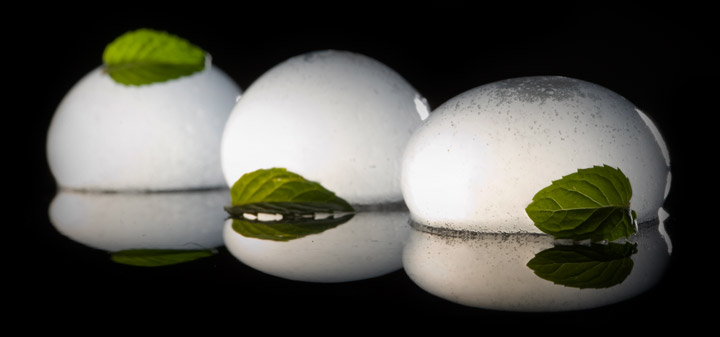
Another popular technique used by molecular chefs is the creation of unique "noodles." In the below recipe for Instant Pea Parmesan Noodles, inspired by Chef Wylie Dufresne of WD-50 in New York uses Methylcellulose F50 to create noodles that form the instant they hit hot broth. Methylcellulose has the unique property of forming a gel when heated, rather than when chilled.
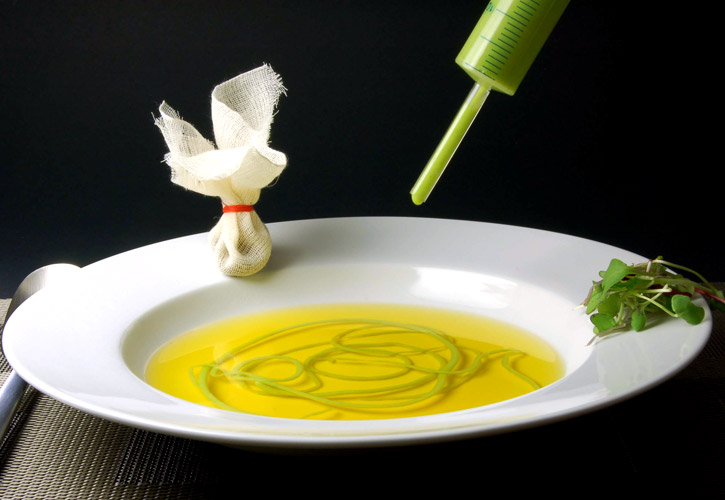
By simply using a different gelling agent, you can make a gel noodle with a completely different texture and presentation. These Arugula Agar Spaghetti can be made ahead of time and served alone, in a broth, chilled, or warm. This is because the gelling agent agar-agar stays gelled at a wide range of temperatures.
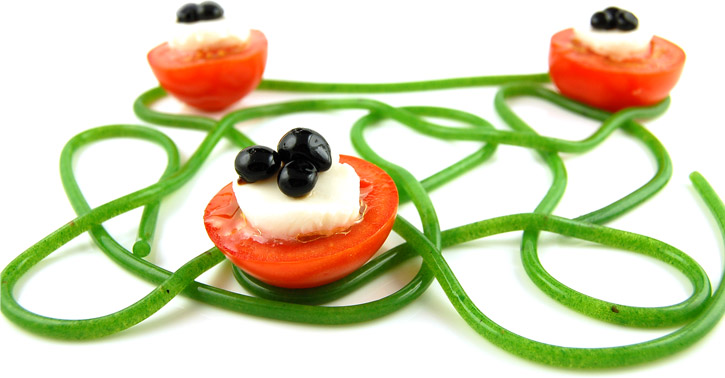
Even humble sauces can be made into delightful visual experiences with a little agar. In this recipe for Foie Gras Medlar and Roasted Barley Bread, Chef Roy Caceres uses agar agar and locust bean gum to create whimsical dollops of carrot/medlar sauce (opaque, orangeish) and wine sauce (transparent orange).
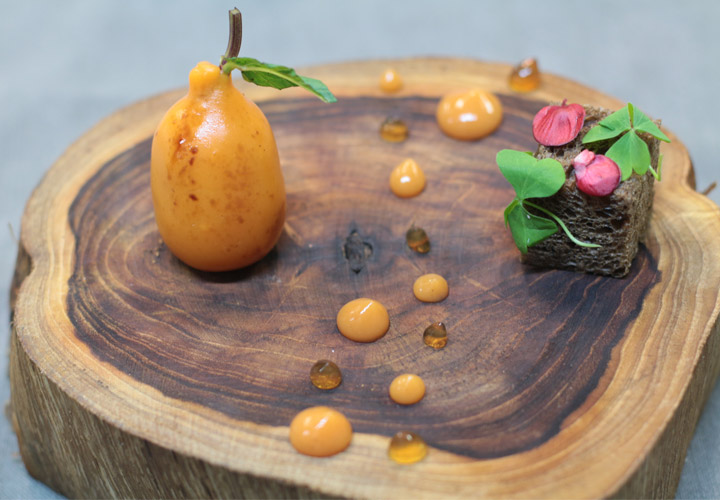
Another interesting modernist cuisine technique is cold oil spherification. The desired liquid is transformed into small jelly balls using agar agar and the cold oil spherification method which consists of cooling droplets of a hot agar solution below 35 ˚C (95 ˚F) by releasing them in cold oil using a syringe or pipette. In the video below we show how to make balsamic vinegar pearls.
As we learned in the Gels Properties class, gels don't need to be solid. Fluid gels are a great modernist way to add a new texture to your dishes and present them beautifully. Hot or cold, fluid gels can be made from fruit or vegetable juices, stocks, beverages and practically any flavorful liquid you want.
Fluid gels allow you to incorporate flavorful liquids in dishes that wouldn't work well with liquid ingredients. On a flat plate or to coat other ingredients, fluid gels could be more adequate than liquids. A fluid gel also adds a smooth and creamy texture to the liquid, allowing you to present a liquid ingredient with a different mouthfeel and play with different textures such as a Port wine fluid gel as shown below and a Port wine foam for example.
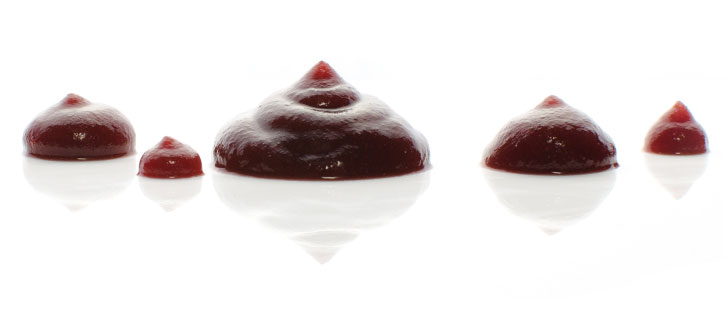
You can also have some fun and make edible lipstick gels with our lipstick molds. The video below demonstrates how to make a lipstick Popsicle but you can also use a gel.





